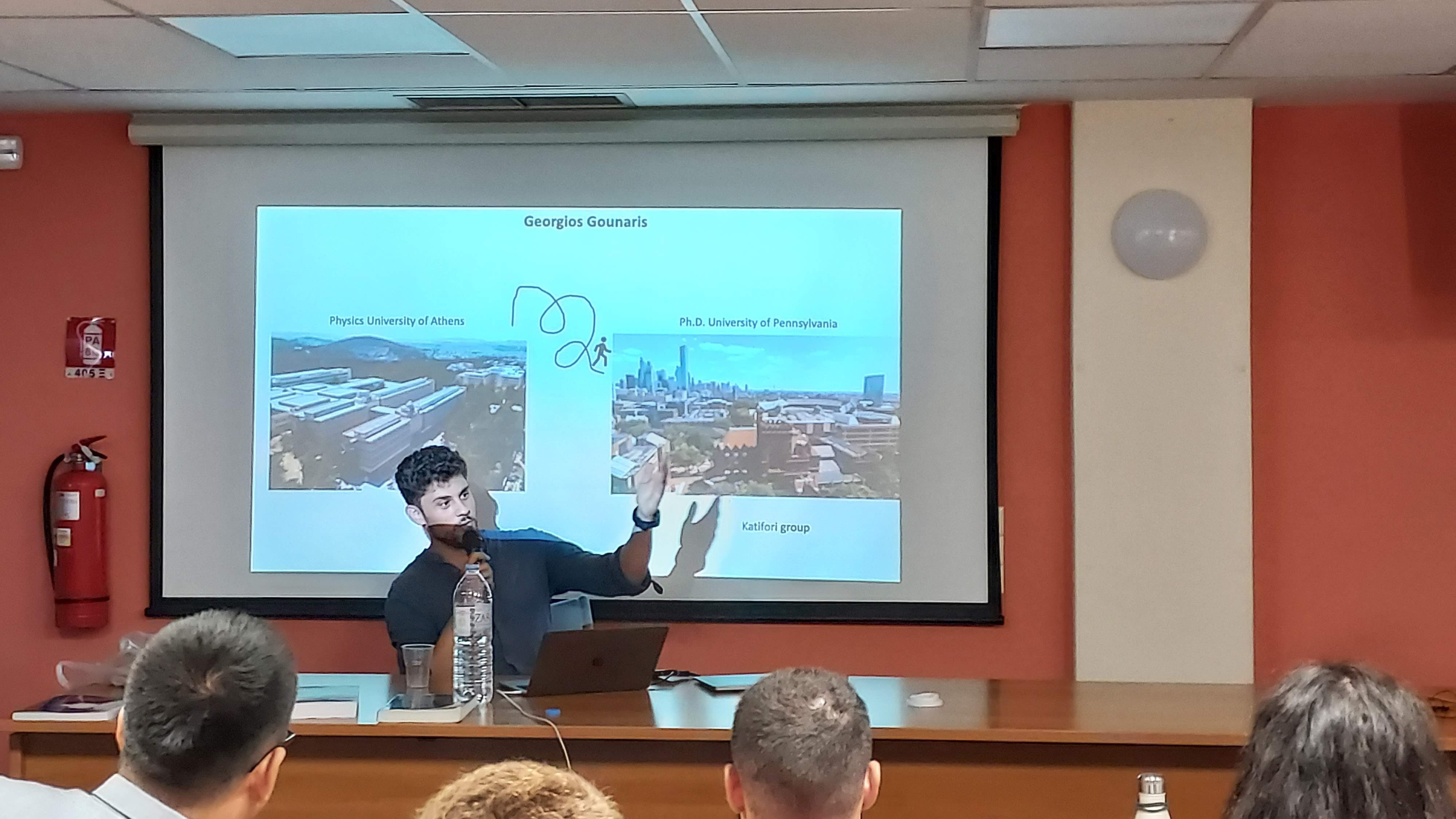In August, eight students from the School of Arts & Sciences attended a weeklong program in Crete with Eleni Katifori and Arnold Mathijssen of the Department of Physics and Astronomy to learn about the physics of living systems.
Katifori, who played an instrumental role in facilitating and organizing the summer program with faculty from three other institutions in Greece and the United States, says, “Our goal with this inaugural summer school in Crete was to increase awareness of international biophysics communities among the American and European students while providing an environment to foster new collaborations for the young scientists.”
The program, Biological Physics: Soft Living Matter, introduced fourth-year undergraduate and early-stage graduate students—predominantly from physics and materials science backgrounds—to systems of cutting-edge research within biological physics. For seven days, students and faculty participated in a series of lectures, demonstrations, computational workshops, a panel discussion, and a poster session.
Mathijssen gave a three-part introduction to fluid mechanics in living systems, beginning with the fundamental concept of how tiny microorganisms move through fluids like water or the atmosphere. He followed with an explainer on non-equilibrium diffusion in biology and finally a lecture on active matter and collective motion.
Mathijssen says these fundamentals aren’t fully covered in physics departments anymore. “Usually these [topics] appear in mechanical engineering courses,” he says, “sometimes mathematics too, so in thinking of a way to unify a topic for a group of people from different parts of the world with different academic backgrounds, I thought it best to get them all on the same page with the basics.”
“One can overlook how pervasive these fundamentals are in biology,” Katifori says. “We’re around 70% fluid, and fluid flows and transport are essential for keeping organisms alive.”
She says the faculty chose topics designed to fill knowledge gaps that naturally occur in very broad fields like biophysics wherein many experts are specialized in one facet of it.
Georgios Gounaris and Aaron Winn, Ph.D. candidates in the Department of Physics and Astronomy, also helped prepare materials for a computational biology workshop at the summer school. They say that a major challenge was keeping the content accessible for people with no coding backgrounds, and still exciting and for those with some experience.
Winn, who has studied the spatial distribution of disease, says their solution was to give students the choice to explore one of two topics: epidemics and the stochastic movement of entities, a concept known as random walks.
“This experience was particularly valuable to me because I’m interested in teaching in the future,” says Winn. “But teaching computational biophysics seemed daunting, so it was great to see that some of the students were really engaged in the material or even getting interested in harder problems that were not assigned.”
Katifori and Mathijssen say the summer program also served to highlight opportunities abroad for Penn students, while also presenting new options for some of the European students. In the future, they hope to be able to offer the program to more students.
“It was great to see my students get excited to meet members of the global biophysics community and learn about the work being done in Europe and Crete in particular,” Katifori says.
Eleni Katifori is an associate professor and undergraduate affairs chair in the Department of Physics & Astronomy in the School of Arts & Sciences at the University of Pennsylvania.
Arnold Mathijssen is an assistant professor in the Department of Physics & Astronomy in the School of Arts & Sciences at Penn.
The 2023 Summer School was supported by students and instructors from Lehigh University, the University of Pennsylvania’s Center for Soft and Living Matter, and the Max Planck Society’s Partner Group program.








